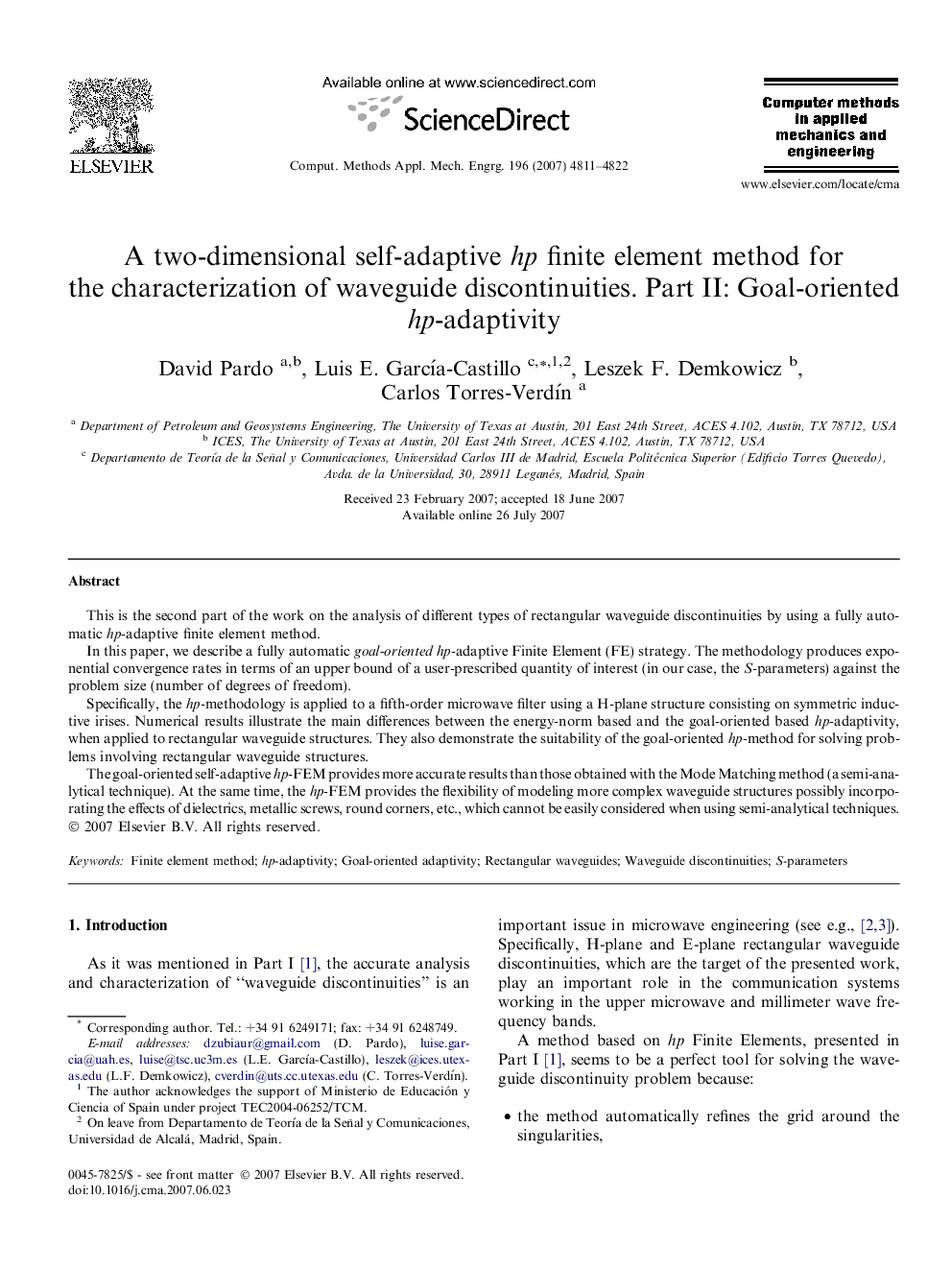| Article ID | Journal | Published Year | Pages | File Type |
|---|---|---|---|---|
| 499668 | Computer Methods in Applied Mechanics and Engineering | 2007 | 12 Pages |
This is the second part of the work on the analysis of different types of rectangular waveguide discontinuities by using a fully automatic hp-adaptive finite element method.In this paper, we describe a fully automatic goal-oriented hp-adaptive Finite Element (FE) strategy. The methodology produces exponential convergence rates in terms of an upper bound of a user-prescribed quantity of interest (in our case, the S-parameters) against the problem size (number of degrees of freedom).Specifically, the hp-methodology is applied to a fifth-order microwave filter using a H-plane structure consisting on symmetric inductive irises. Numerical results illustrate the main differences between the energy-norm based and the goal-oriented based hp-adaptivity, when applied to rectangular waveguide structures. They also demonstrate the suitability of the goal-oriented hp-method for solving problems involving rectangular waveguide structures.The goal-oriented self-adaptive hp-FEM provides more accurate results than those obtained with the Mode Matching method (a semi-analytical technique). At the same time, the hp-FEM provides the flexibility of modeling more complex waveguide structures possibly incorporating the effects of dielectrics, metallic screws, round corners, etc., which cannot be easily considered when using semi-analytical techniques.
